The first time I ever laid eyes on a Jade Plant was back in the 70s in a funky gift shop in Estes Park, Colorado. Standing there looking out the window at the sparkling blue Rocky Mountain sky, I saw this amazing plant sitting on a table and thought, “Man, I wonder what that is?”
After I found out that it was a jade plant, I decided then and there, “I’m going to have to get me one of those babies!” And I did!!
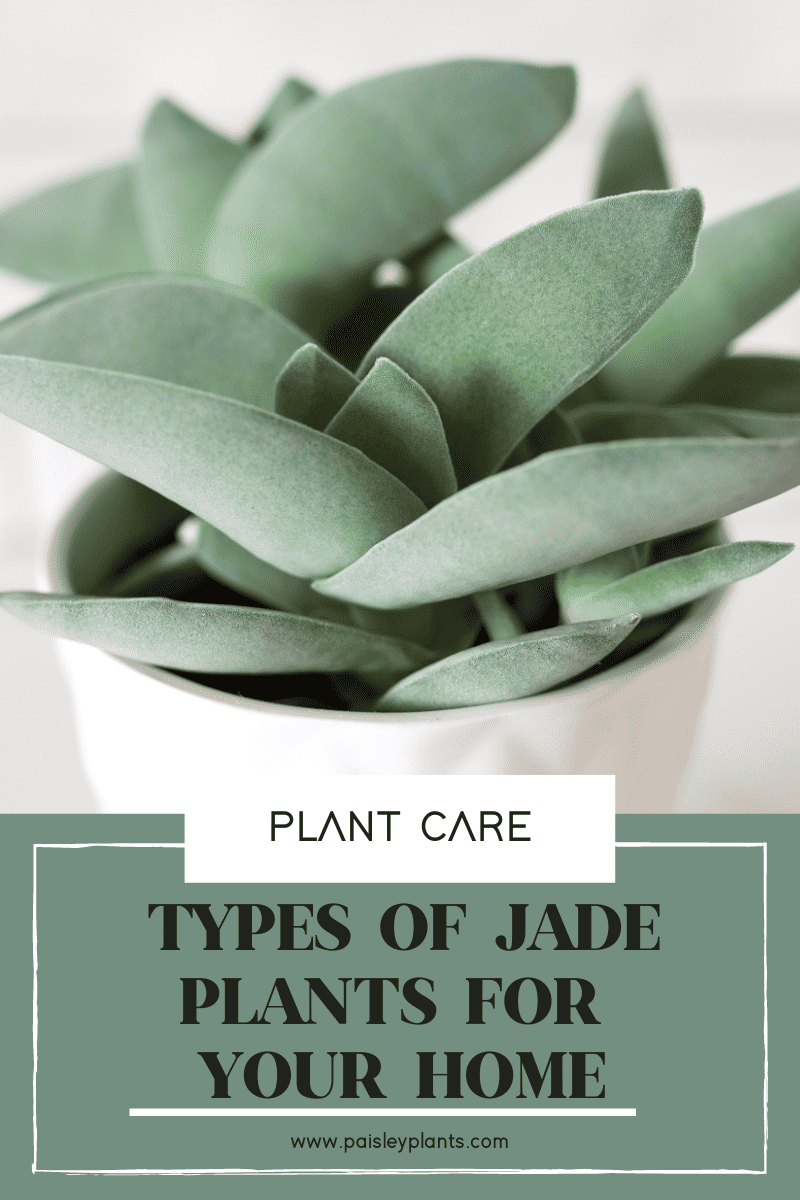
This post includes affiliate links.
And I have been buying them ever since and learning more and more about them and all their awesome different variations, types, shapes and sizes.
Jade Plants originated in South Africa but have been been grown as an indoor plant in Europe and America for quite some time now. These beautiful ornamental plants have fleshy leaves where they hold their water. This popular houseplant is often said to bring good luck and are very common as a house warming gift!
This post is going to take you through a list of many different varieties of Jade Plants that are available to have as your very own! Please join me as we take this walk down this interesting and fun path to more knowledge about these amazing plants!
Table of Contents
20 Types of Jade Plants
1. Crassula Ovata (Jade Plant)
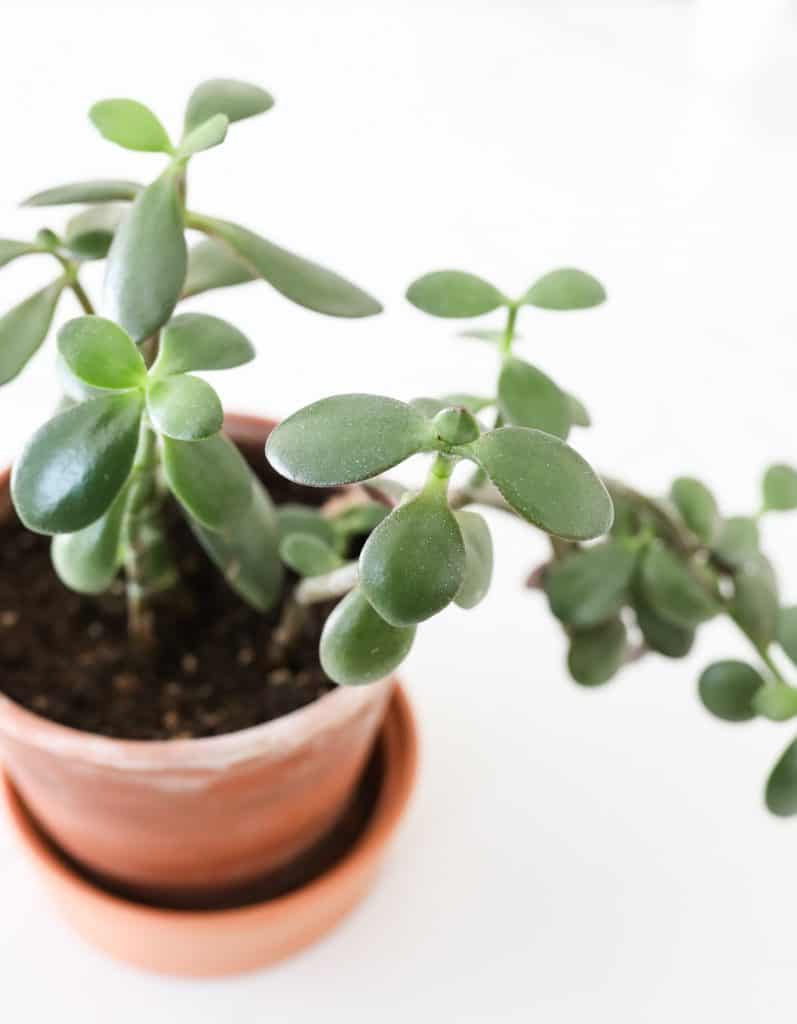
- Most popular of all Jade Plants
- Nicknamed Money Plant or Money Tree, Dollar Plant, and Lucky Plant
- Has medium green oval leaves
- Can develop a reddish tinge around the edges of leaves under bright light conditions
Here’s how to propagate your Jade Plant!
2. Crassula Ovata ‘Pink Beauty’ (Pink Beauty)
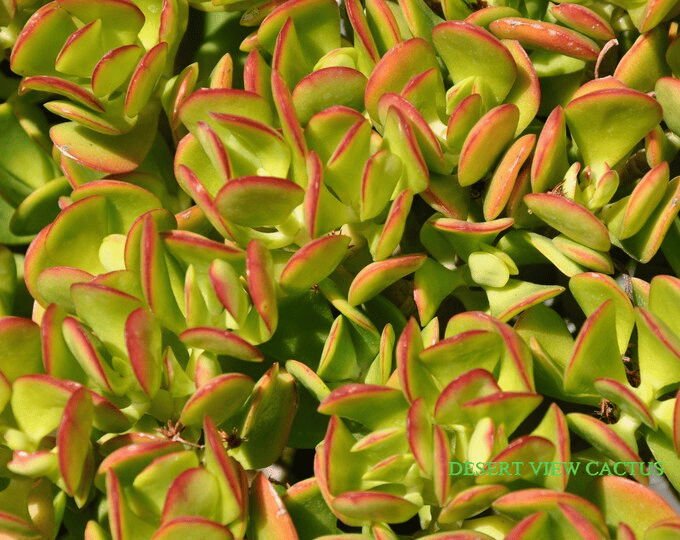
Image via Desert View Cactus
- Has pink flowers unlike the other varieties of jade plants which typically have white flowers
- Flowers bloom indoors when provided enough light
- Typically bloom, however, when grown outdoors in the late autumn and winter months
- The pretty pink star shaped blooms are very profuse, giving the plant a frothy pink look
3. Crassula Ovata ‘Gollum’ (Gollum Jade)
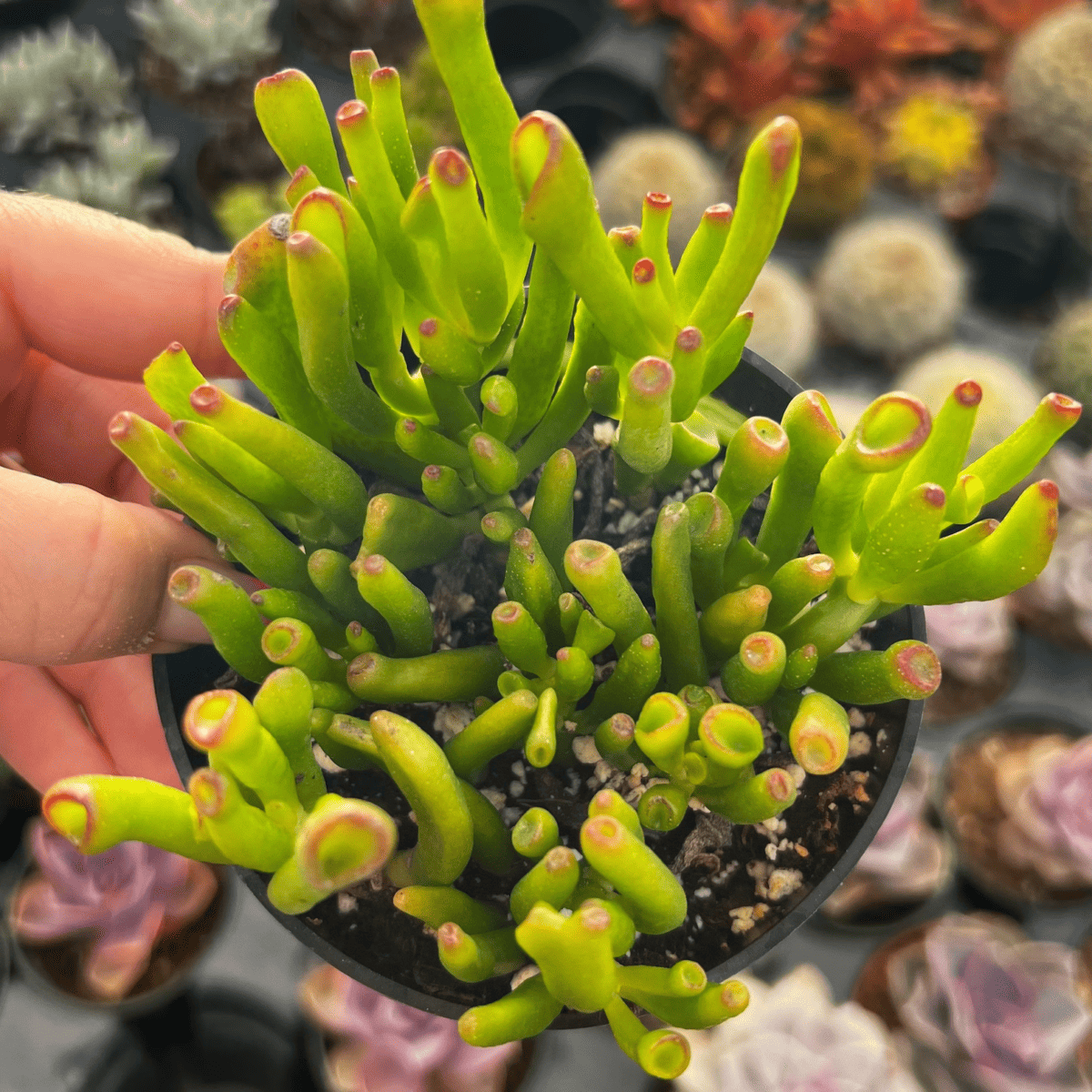
Image via Queen of Succulents
- Has long tubular leaves that curl inward and are tipped in red
- Plant grows and multiplies easily in a sunny location
- Grow in a fast draining, gritty mix for succulents to maintain excellent drainage
- Water regularly allowing soil to totally dry out before you water again
4. Crassula Ovata ‘Hobbit’ (Hobbit Jade)
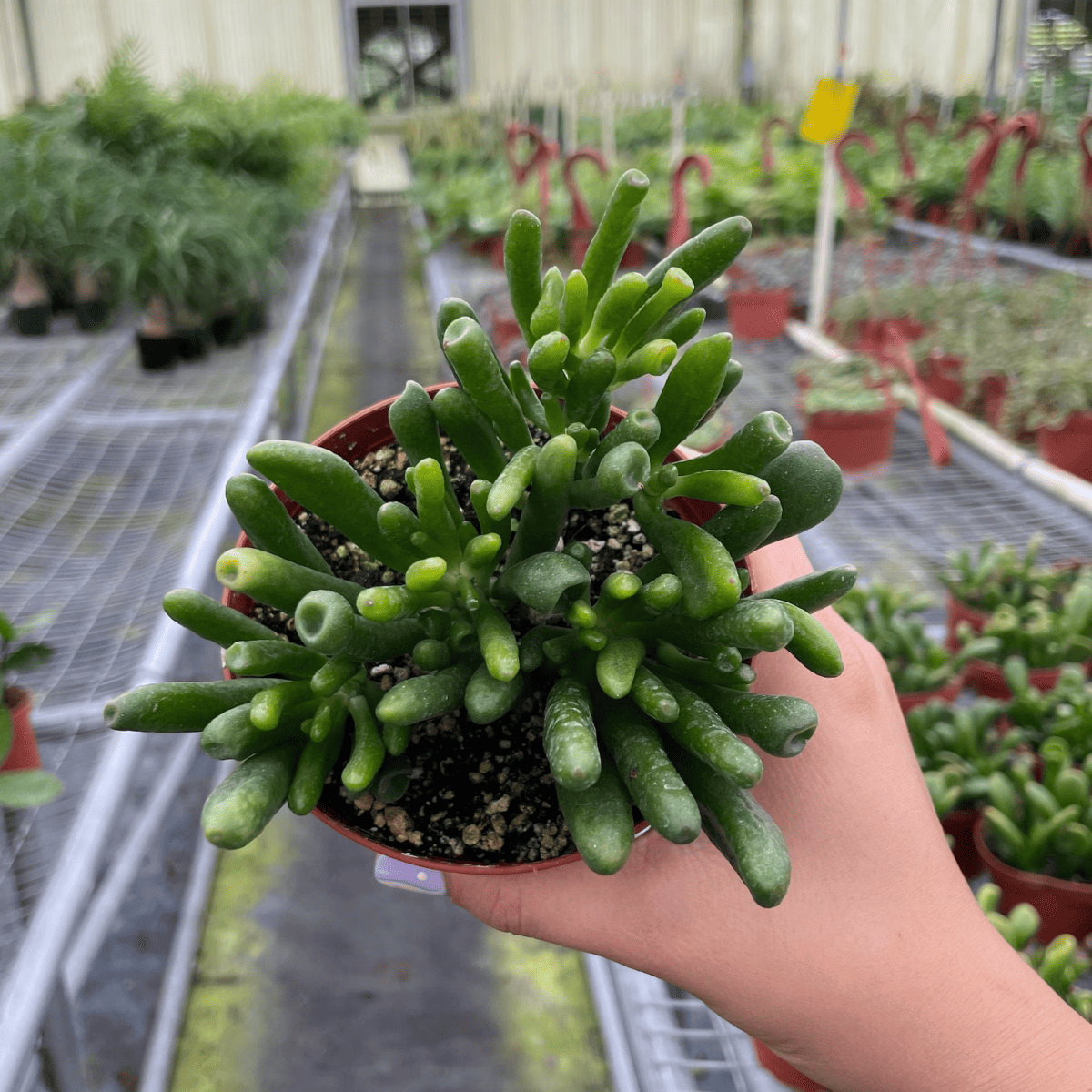
Image via Rooted FL
- Sometimes compared to sea coral due to its tubular green leaves with curled edges and bright red tips
- Slow growing, but can spread up to two feet across at maturity
- Will grow indoors or out, and needs infrequent repotting as it likes having its roots close together
- Slow growing plant and makes it a good choice for terrariums
5. Crassula Ovata ‘Skinny Fingers’ (Skinny Fingers Jade)

Image via Bee Sells Plants
- Typically blooms in the spring months
- Full to partial sunlight is the best for its growth
- Best watering method is the “soak and dry” method
- Has green strangely shaped leaves that have red tips that can turn even more red when stressed correctly
6. Crassula Ovata ‘Red Coral’ (Red Coral Jade)
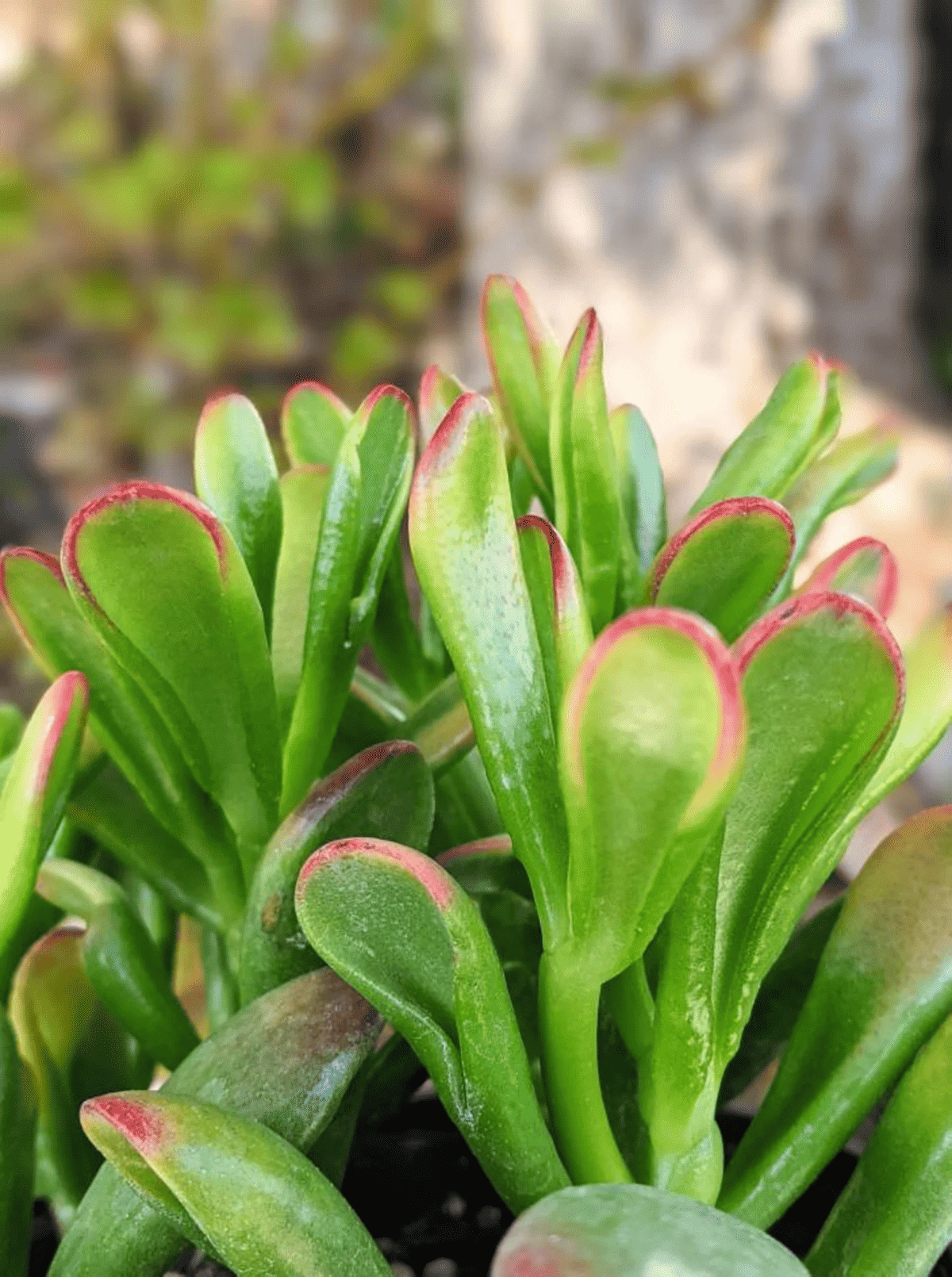
Image via Frannys Garden
- Will bloom white flowers during the growing season under the proper light conditions
- Is a slow growing plant, but can grow to a full three feet tall when mature
- This plant is toxic to both cats and dogs, so should be kept out of reach of your furry friends!
- Require warm temperatures to survive, but maintaining temps above 30 degrees F should guarantee survival
7. Crassula Ovata ‘Crosby’s Compact’ (Crosby’s Compact Jade)
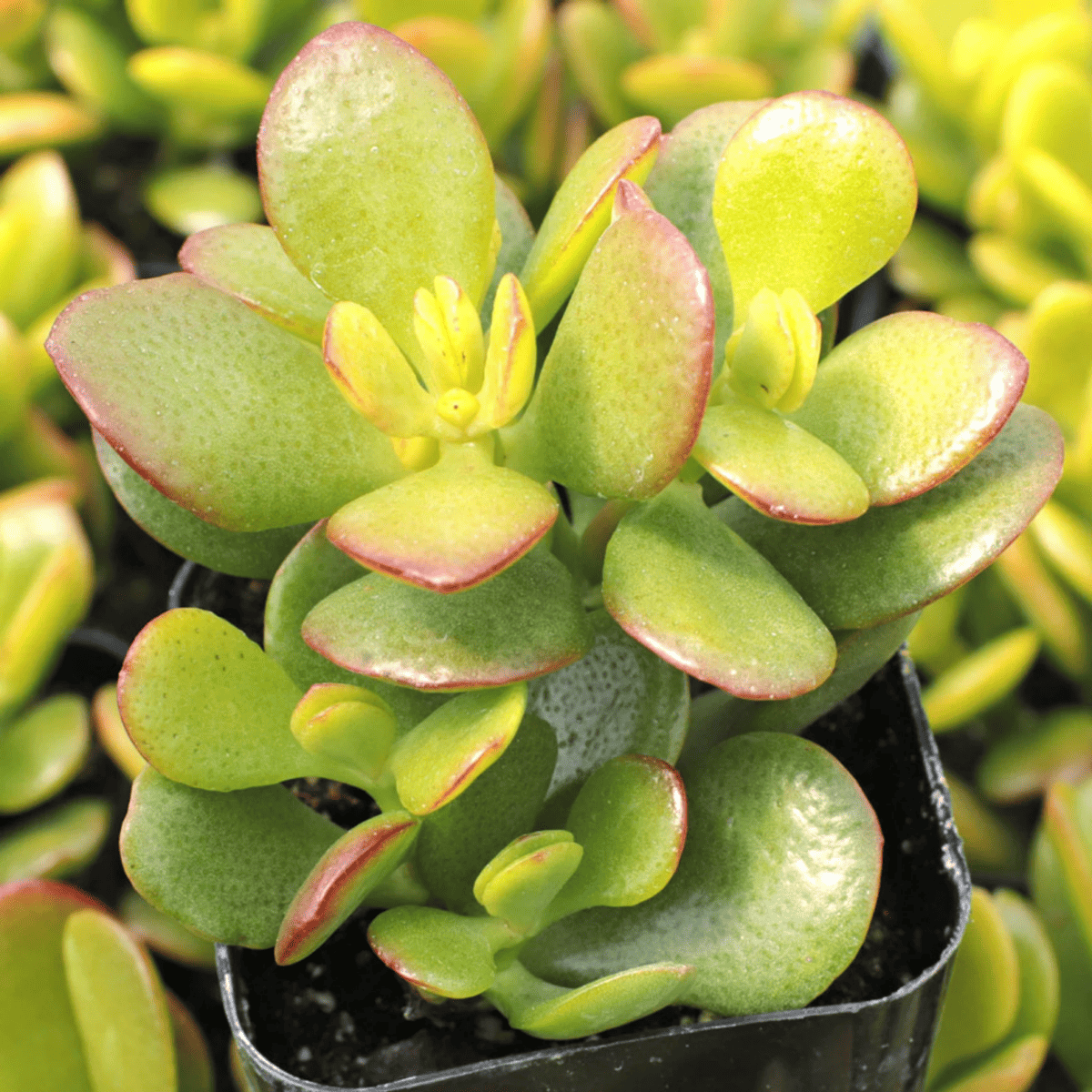
Image via Succulents in the Rough
- Also called a Dwarf Jade Plant
- Has multiple branches with thick stems that bear attractive green leaves with red margins
- Flowers are small, white and star shaped and grow in clusters at the tips of the branches in late fall and early winter
- Should be grown in the sunniest location to encourage more compact, sturdier growth
8. Crassula Ovata ‘Minima’ (Mini Jade)
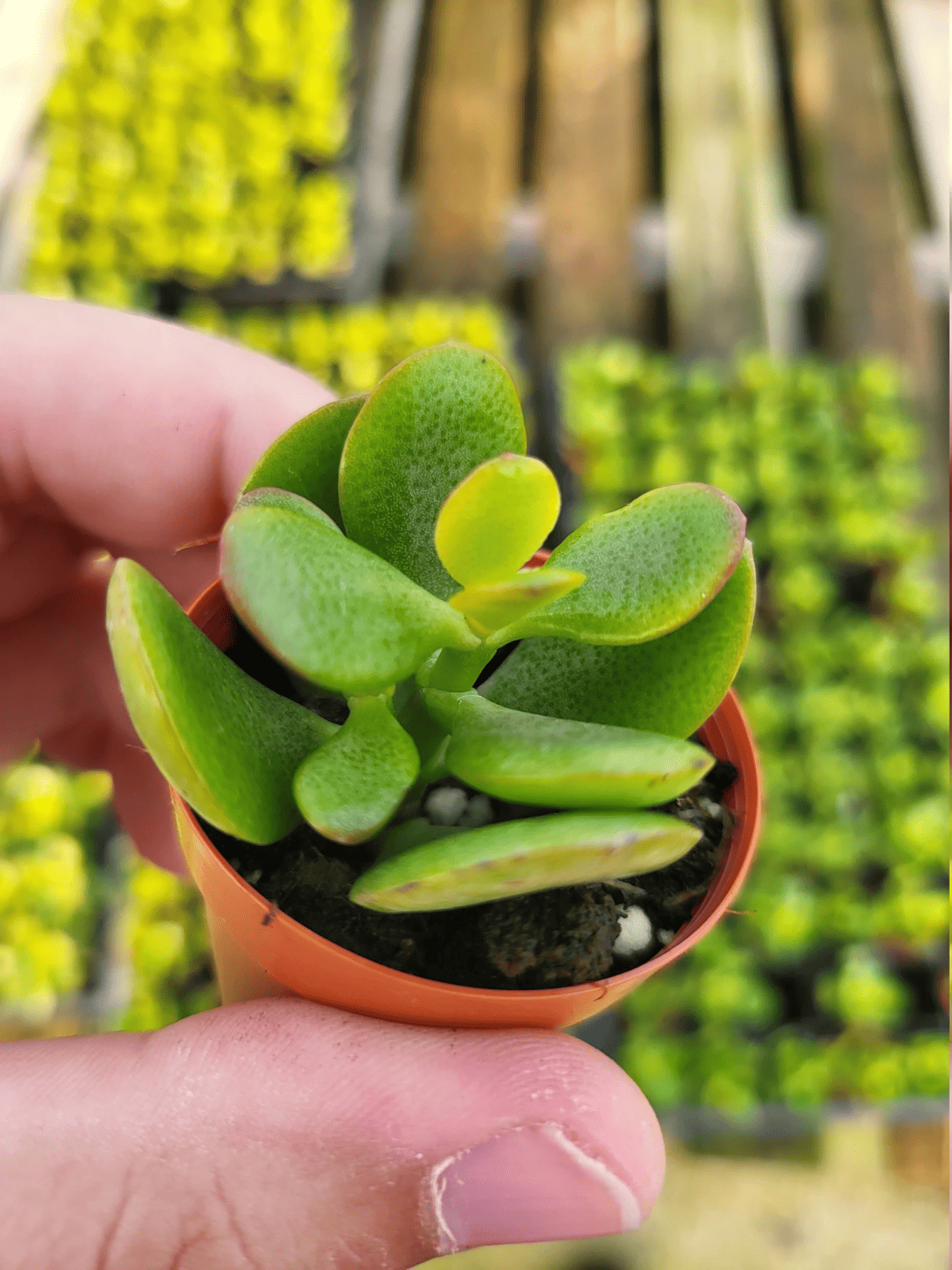
Image via KickAssPlants
- This is the original jade also known as Small Jade, Miniature Jade and Baby Jade
- Flowers are small, star shaped, coral pink and appear in winter months
- During the winter months, water your plant only enough to keep the leaves from shriveling
- Can grow up to 2.5 feet tall and 20 inches wide
9. Crassula Arborescens (Silver Dollar Jade)
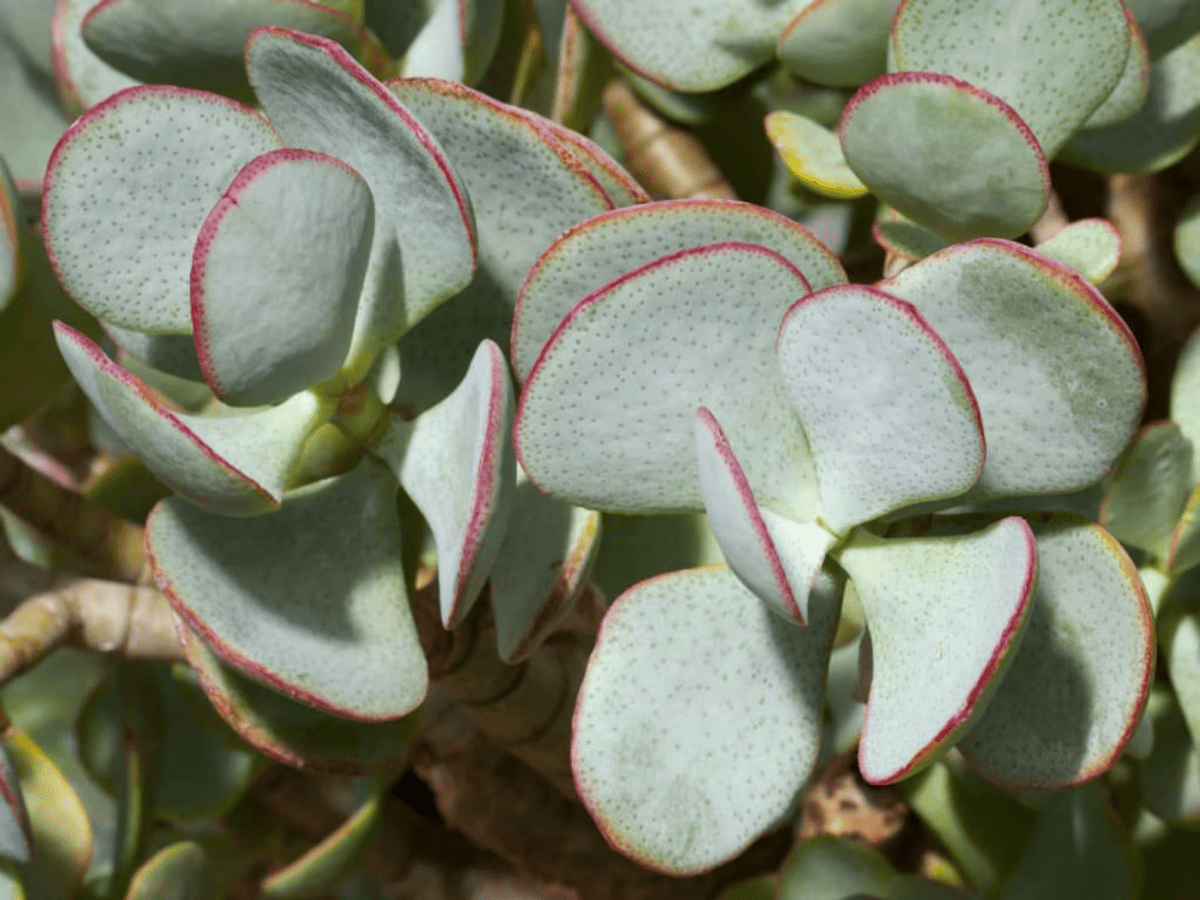
Image via Succulents in the Rough
- A succulent plant known to be native to South Africa in the jade family
- Has attractive rounded blue/gray leaves with maroon edges and small maroon specks on the upper surface
- Place in full direct sunlight to partial shade conditions
- Can grow as large as 4 feet tall
10. Crassula Ovata ‘Hummel’s Sunset’ (Hummel’s Sunset Jade)
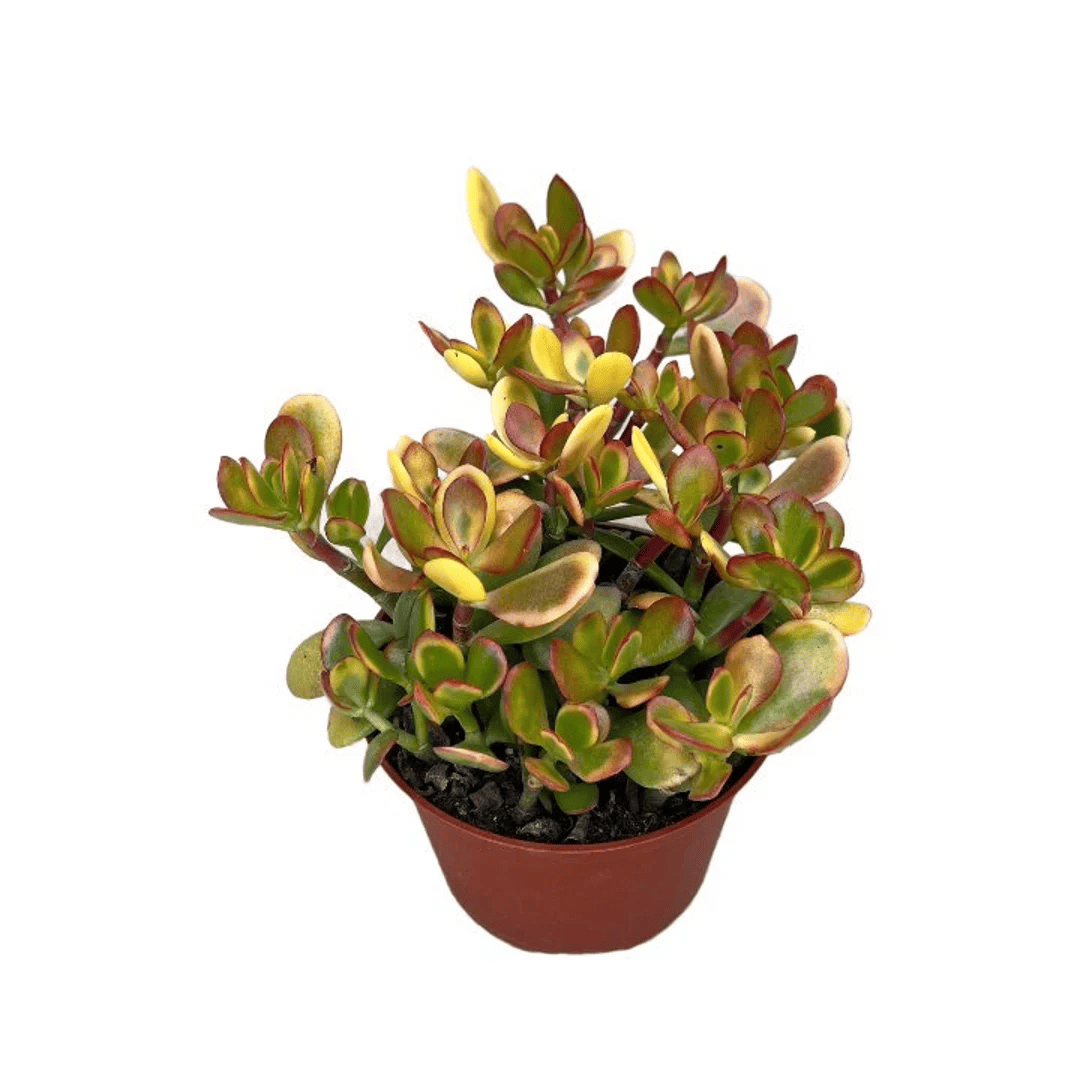
Image via Native West California
- Has green oval-shaped leaves with gold and yellow edges
- Has white flowers that appear in the fall and winter months
- This plant is a prolific propagator. Can be grown easily from stem cuttings and leaves
- It is deer resistant, if grown outdoors!
11. Crassula Ovata ‘Botany Bay’ (Botany Bay Jade)
- Requires little water in the summer and even less in the winter
- Is susceptible to overwatering, especially during the cold season
- Known for its bushy succulent light green leaves with red tips
- Requires about 4-6 hours of direct sun or medium shade exposures per day with bright light
12. Crassula Capitella ‘Campfire’ (Campfire Jade)
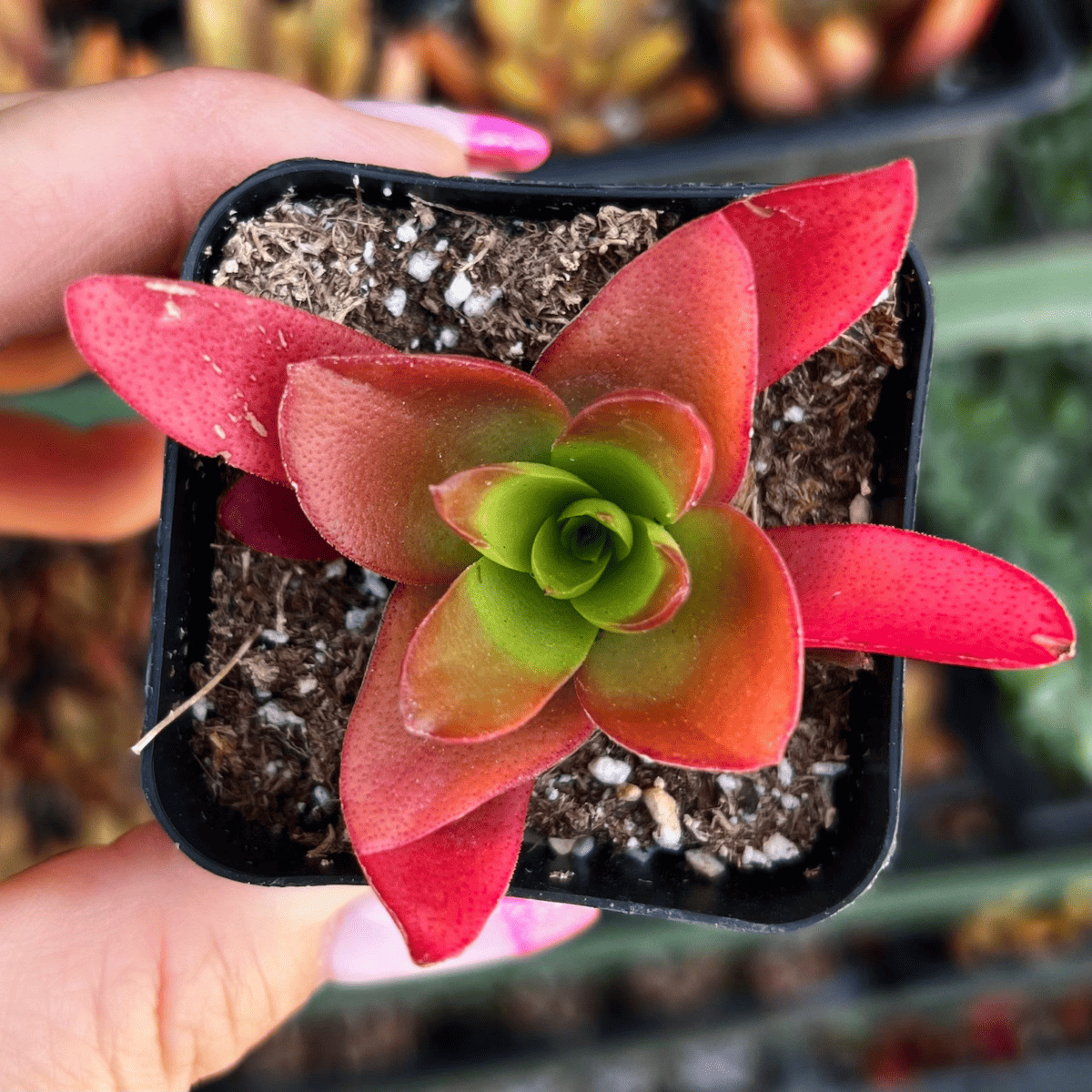
Image via Queen of Succulents
- Native to certain regions of Southern Africa including Botswana and Namibia
- Gets its names from its leaves that look almost like flames
- Leaves start off pale green in color, but turn red from prolonged sunlight
- Not terribly hardy, so need to be looked after carefully
13. Crassula Perforata (String of Buttons Jade)
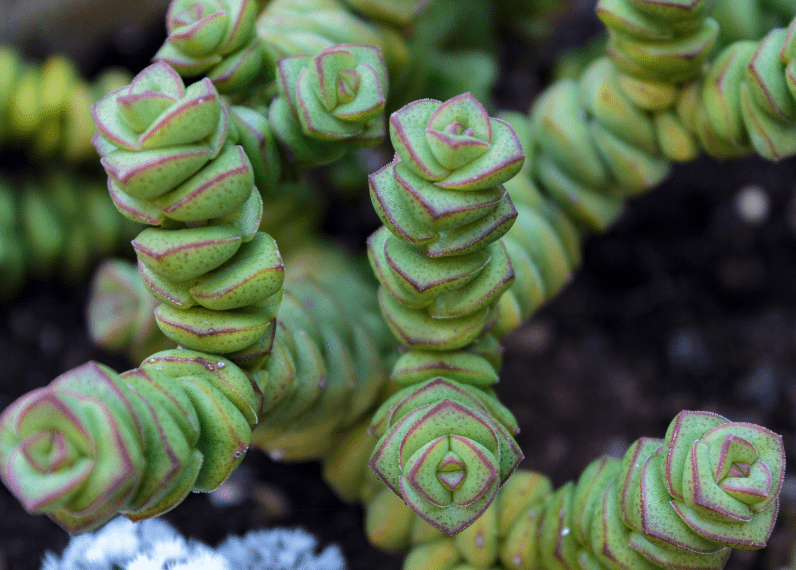
- Has either square or triangle shaped leaves that create a spiral shape around the plant’s stem to give it a stacked appearance
- The gray green leaves can take on a pink hue when exposed to sufficient light
- This plant is toxic to both humans and animals, so use care when placing it
- Relatively easy to care for, so would be a good beginner plant
14. Crassula Falcata (Propeller Plant)
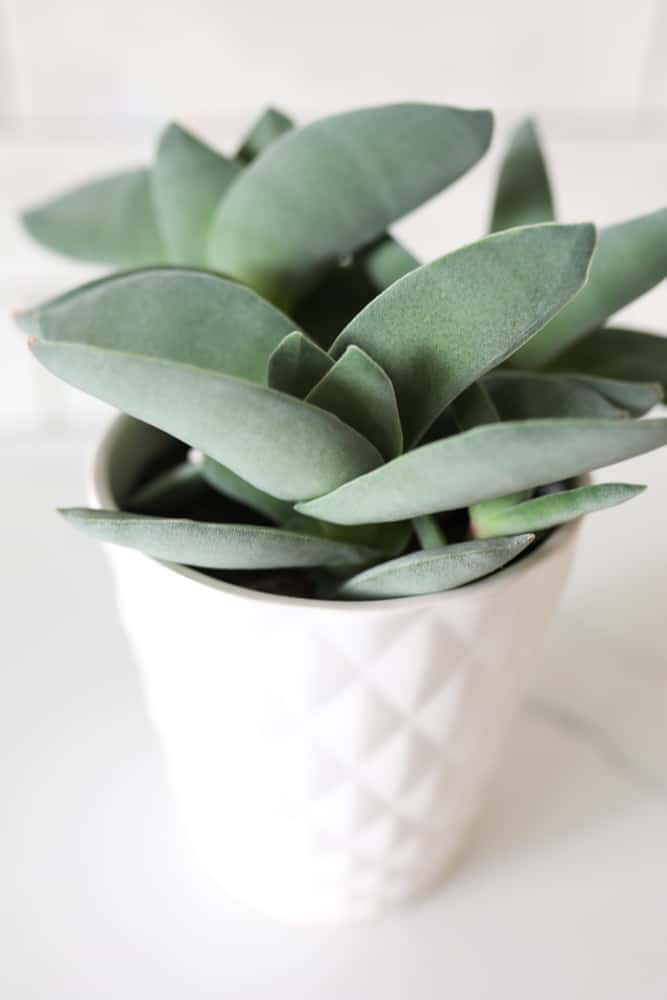
- One of the few succulents that does well indoors
- Is not cold hardy but can withstand temperatures down to 20 degrees F
- Generally non-toxic to both humans and animals
- Typically grows 9” to 12” tall and 12” wide
15. Crassula Multicava (Fairy Crassula)
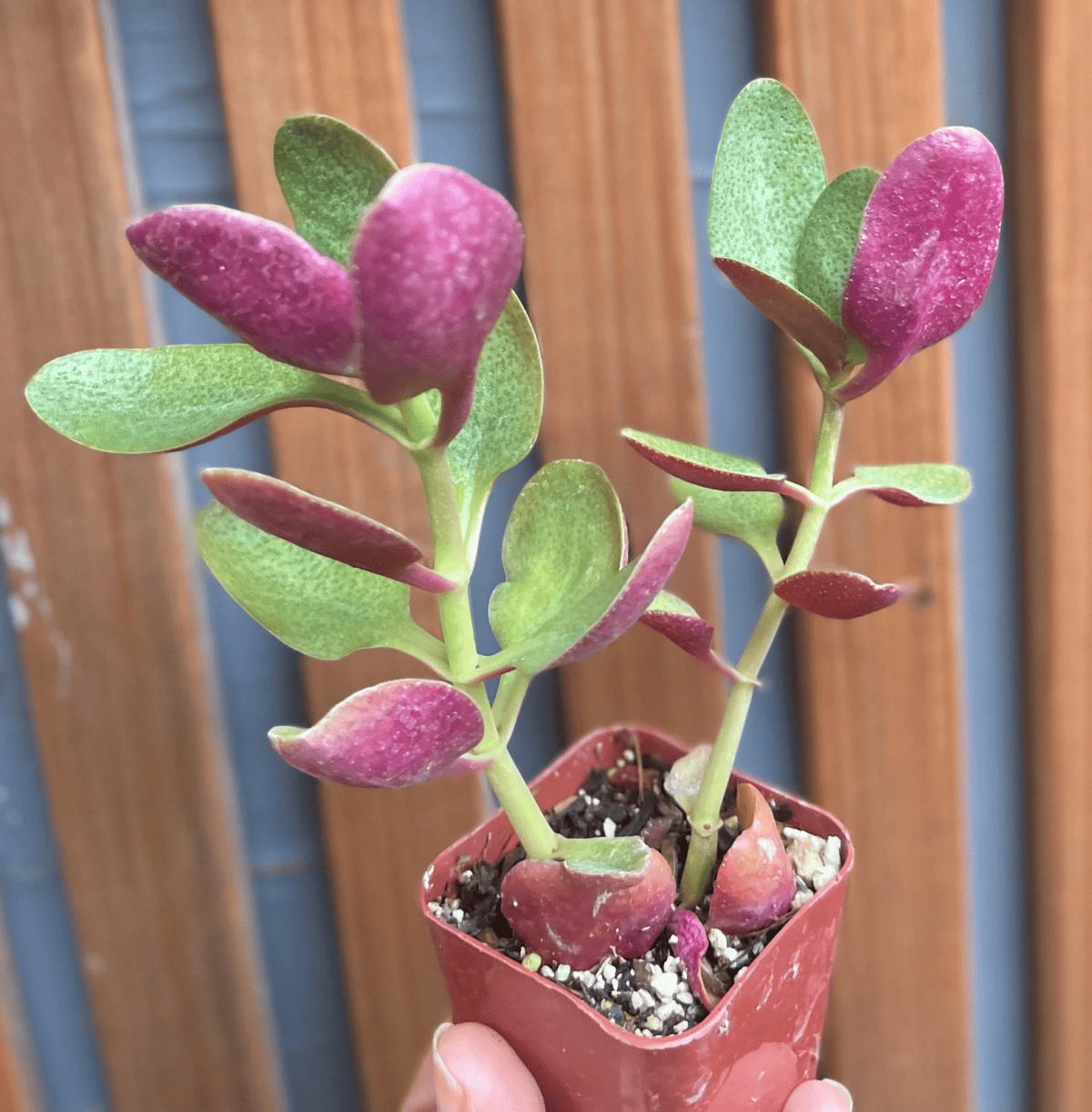
- A shade loving plant, but can also grow in full sun
- Is tolerant of extended dry periods when growing in shady areas
- Grows as a good ground cover when grown outdoors
- Can tolerate temperatures as low as 20 – 25 degrees F
16. Crassula Arborescens Undulatifolia (Ripple Jade)
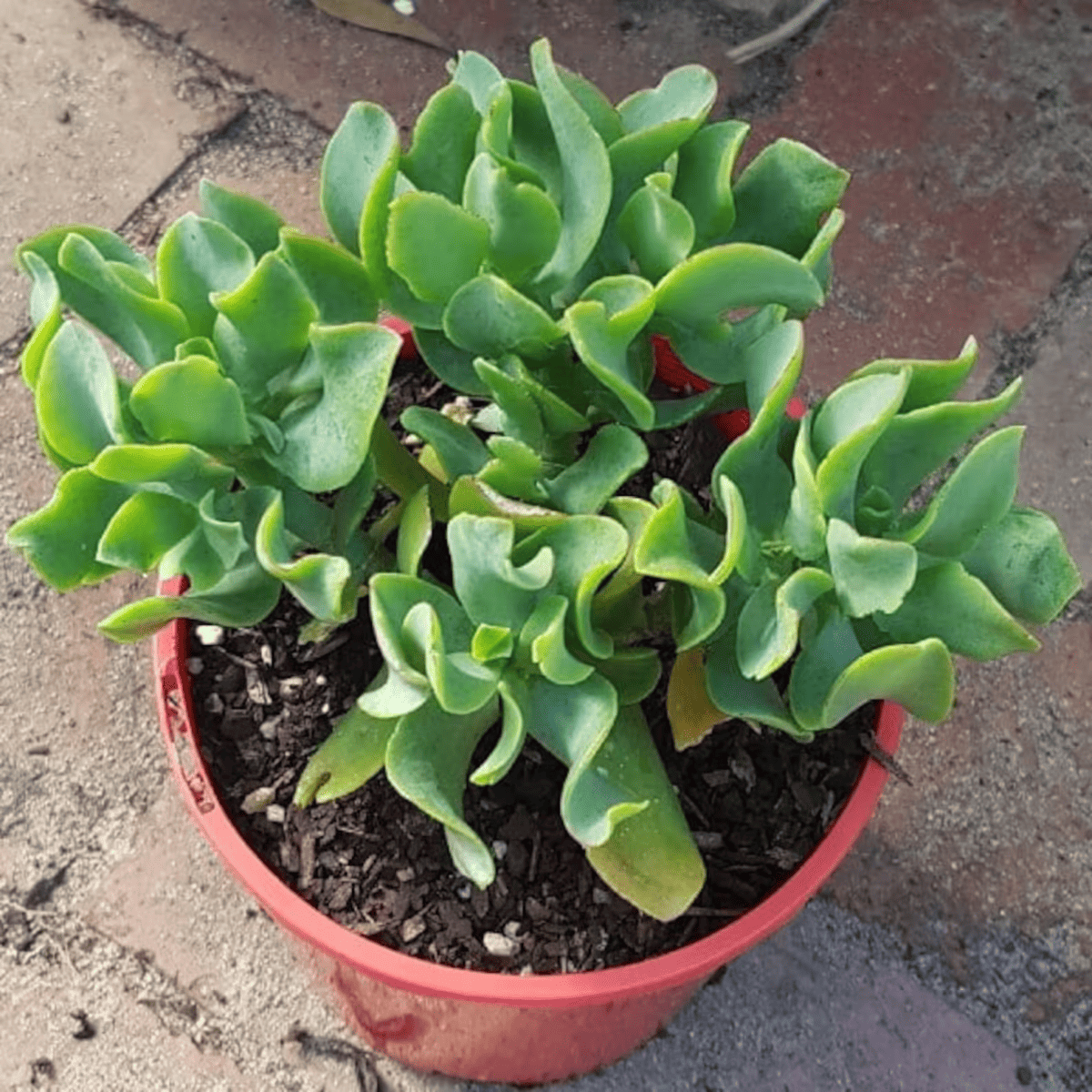
Image via Succulents in the Rough
- Variation of the traditional Jade plant and has thin wavy leaves
- Works well to fill in space between other succulents in an arrangement
- Can be toxic to both humans and animals
- Water only after plant has dried out to prevent root rot
17. Crassula Sarmentosa (Trailing Jade)
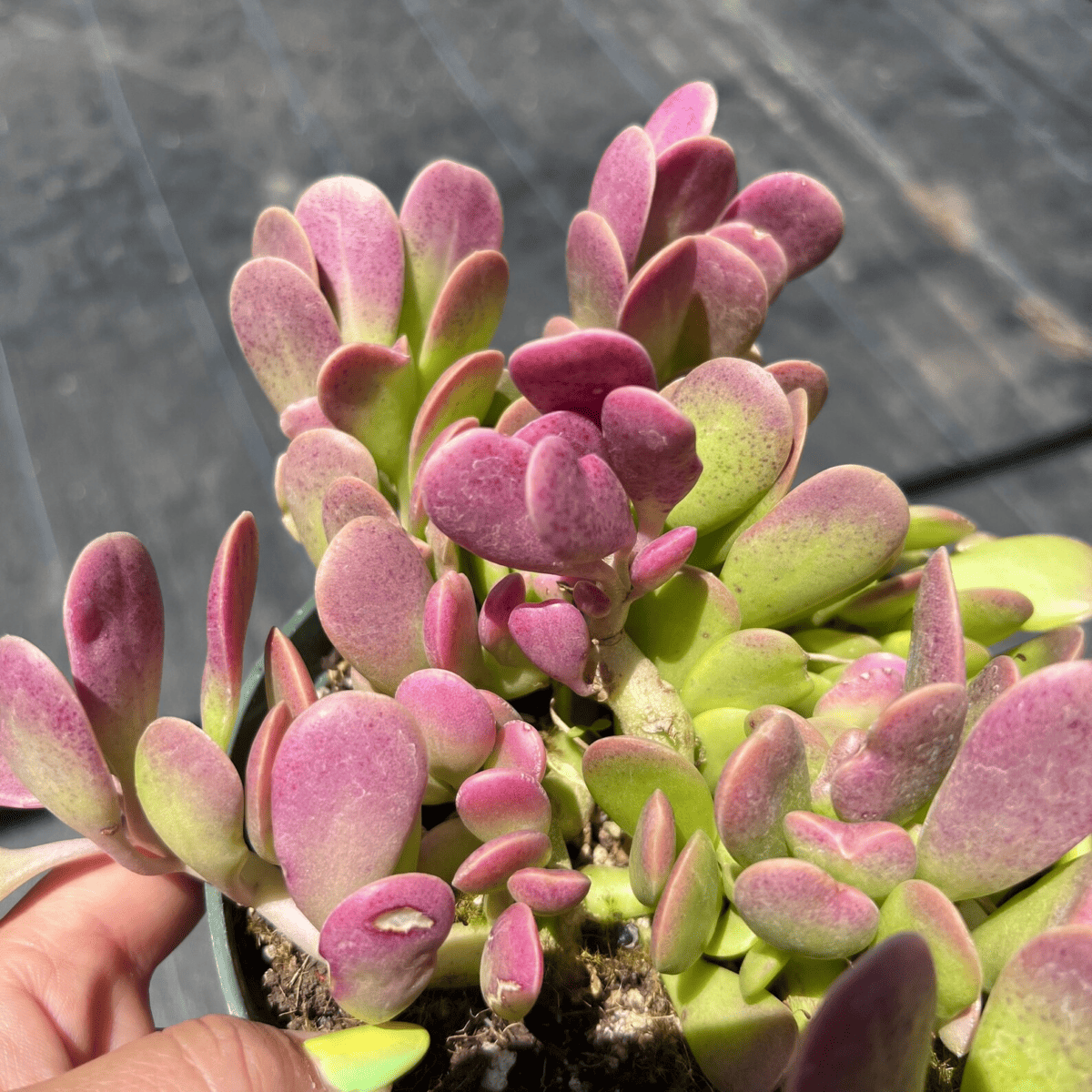
Image via Queen of Succulents
- A much branched succulent with trailing, climbing or hanging stems with green or yellowish green leaves
- Best placed in a south facing window to get sunlight for most of the daylight hours
- Wait to water this plant until all the soil is dry. If the soil is still moist, you risk root rot
- Does not require frequent trimming or pruning as it is a slow-growing plant
18. Crassula Tetragona (Miniature Pine Tree)
- Commonly known as the Miniature Pine Tree
- Prized among collectors for its distinctive foliage and compact size
- Very popular among bonsai enthusiasts
- Leaves are a vibrant green and well spaced in pairs along the stems
19. Crassula Rupestris var. Marnieriana (Baby Necklace Jade)
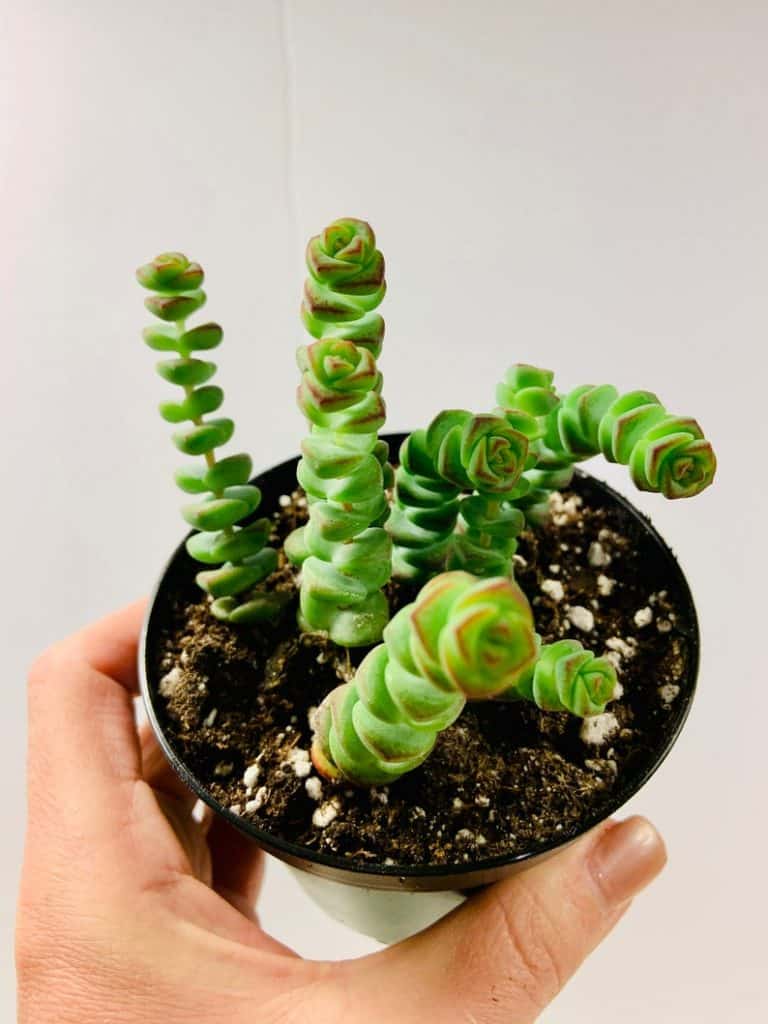
Photo via Soil and Seed Co
- The Jade Necklace has multi-branched growth with oval shaped leaves that grow in a stacked pattern
- The leaves are shades of red and yellow in the summer and gray tinged for the remaining seasons
- Use the ‘soak and dry’ method of watering for this plant
- Plant stays fairly small at about 6 – 12 inches at maturity
20. Crassula Rupestris var. Monticola (Rosary Vine)
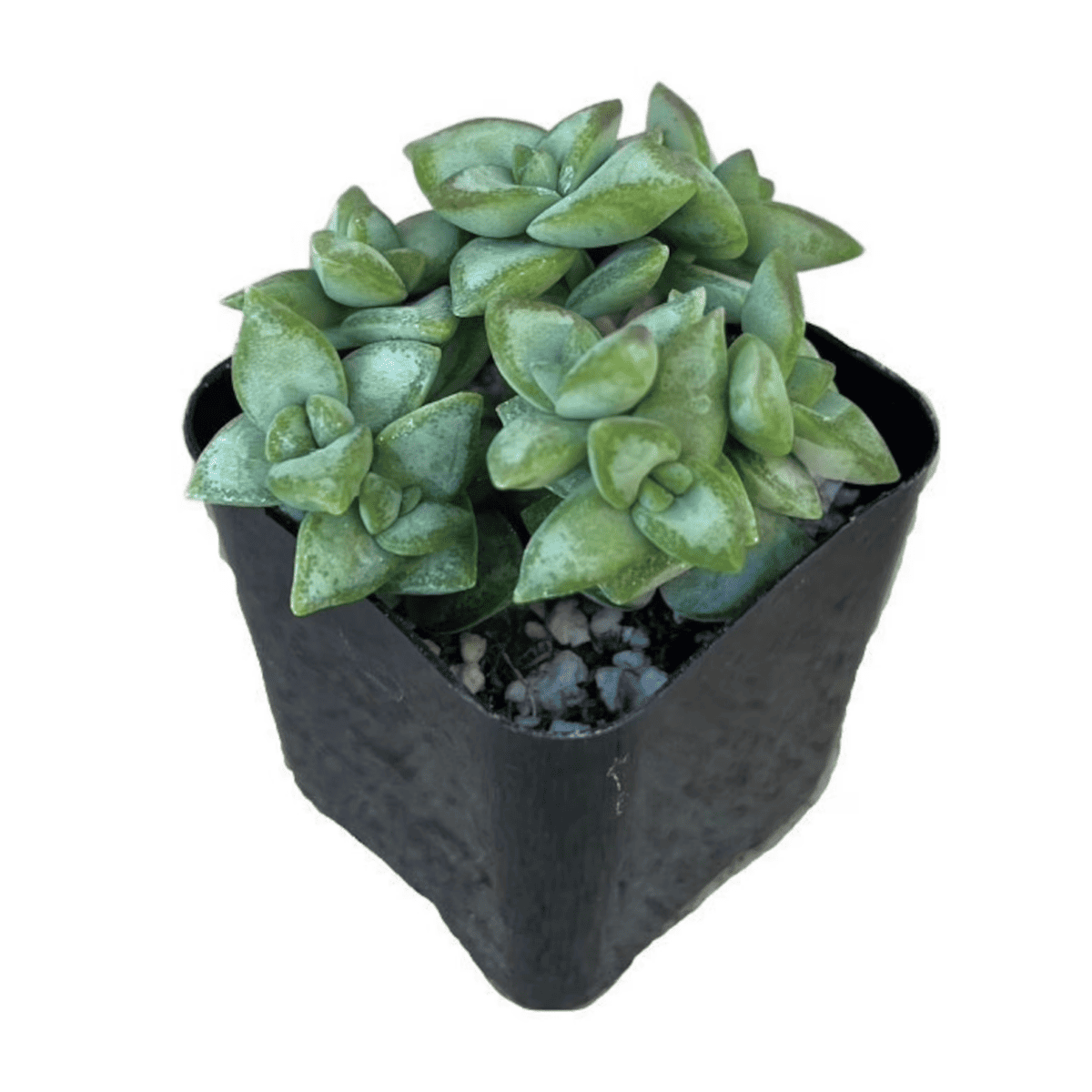
Image via Native West California
- Known to be a very beautiful looking succulent
- Plants main feature are the small green clumping leaves that can change color when stressed correctly
- Can produce star shaped pink flowers in the spring with proper light conditions
- Does not require repotting often
So, there you have it. Twenty different types of Jade Plants and every one has unique and different characteristics and pictures so you can see the differences!
If you want to branch out (get it??), a new jade plant would be a great addition to your houseplant collection. They add a lot of dimension and character to any household. As always, keep on growing!
